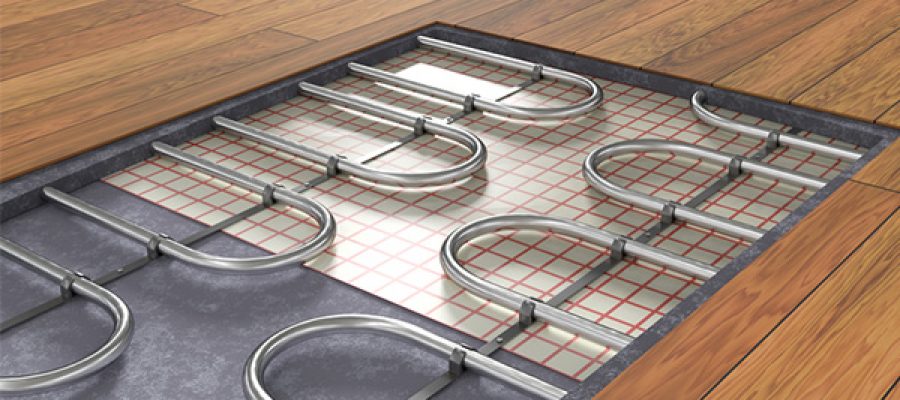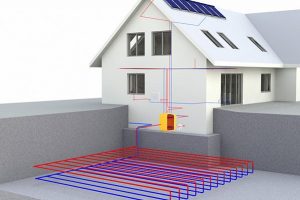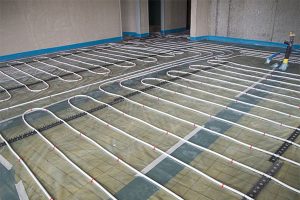“There are two basic types of radiant floor heating systems: electric and hot water.
Electric radiant floor heating uses electric resistance cables to produce heat. The most popular style features cables embedded in thin mats that can be installed under tile, stone, engineered wood, and laminate floors. Electric heating mats are good for retrofits.
The mats are connected to a thermostat controller where you can select temperature settings or set up a timer so floors are warm and welcoming in the morning. Some types are certified safe for use inside showers, too.
Hot water radiant systems, also called hydronic heating, use heated water circulating through PEX (cross-linked polyethylene) tubing. The tubing is embedded in mortar or in extra thick plywood subfloor panels that have pre-cut channels for holding the tubing in place. The plywood method can’t be used under nail-down flooring like hardwood.
Hydronic systems are attached to a hot water heater, a pump that circulates the water, and a thermostat to regulate room temperature. The system is closed, meaning it doesn’t connect to the hot water heater and system you use every day for washing, cooking and bathing.”
Read more about radiant floor heating here.
Radiant floor heating is one of the most efficient ways to heat your home. The heat is transferred directly from your floor and rises to the ceiling for a uniform temperature. Compare that to conventional heating systems coming from a duct where air must be properly circulated from one end of the room to the other. Also since air flow isn’t involved, those with dust allergens should notice the difference greatly.
The professionals at Team Mechanical offer expert radiant floor heating installation. We can provide an assessment and discuss whether radiant heating makes sense for your home. Call us at 612-729-5646 to learn more about this new style of heating.





